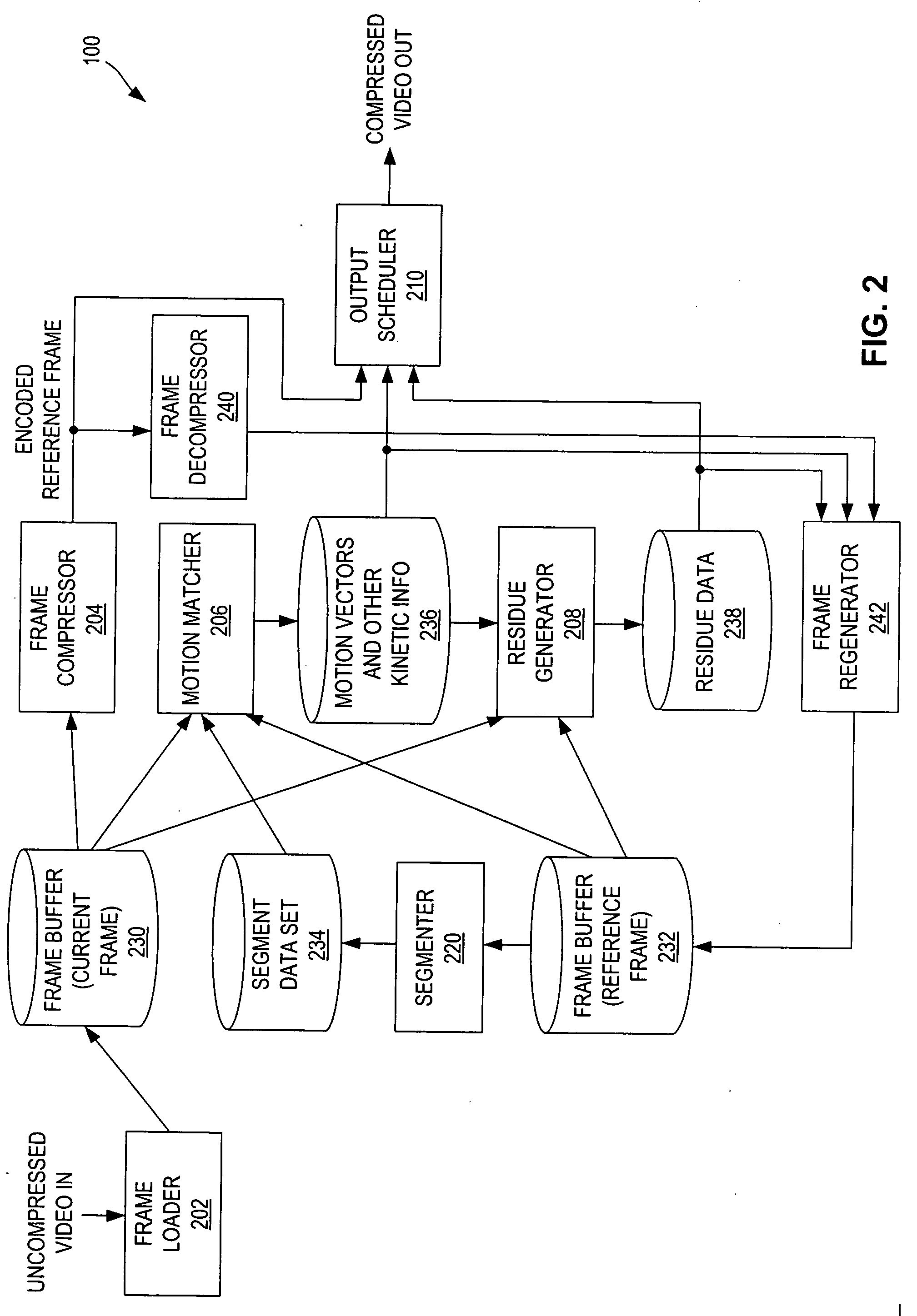Segment-based encoding system using residue coding by basis function coefficients
a coding system and residue technology, applied in the field of segment-based encoding systems, can solve the problems of fractal compression not being a viable general compression method, jpeg and similar compression schemes not addressing the crucial issue of temporal redundancy, and fractal compression is very computationally intensiv
- Summary
- Abstract
- Description
- Claims
- Application Information
AI Technical Summary
Benefits of technology
Problems solved by technology
Method used
Image
Examples
Embodiment Construction
[0034]FIG. 1 is a block diagram of a video stream processing system 10. System 10 accepts video data from any number of sources, encodes it using encoder 100 such that the video data is compressed (i.e., occupies fewer bits than the uncompressed video data) for transport or storage. System 10 includes a decoder 200 that receives the transported or stored compressed video data and decompresses for use by any number of video sinks (users).
[0035] Merely by way of example, possible video sources include a video camera, a video storage system (typically storing uncompressed, or partially compressed, video data), a high-speed channel, such as a cable link or broadcast link capable of transmitting uncompressed or partially compressed video data, or a video player, such as a VCR or DVD player. Possible video users, for example, might include a display device, such as a monitor or television, a video processor or video storage that can store decoded video data.
[0036]FIG. 1(a) illustrates a...
PUM
 Login to View More
Login to View More Abstract
Description
Claims
Application Information
 Login to View More
Login to View More - R&D
- Intellectual Property
- Life Sciences
- Materials
- Tech Scout
- Unparalleled Data Quality
- Higher Quality Content
- 60% Fewer Hallucinations
Browse by: Latest US Patents, China's latest patents, Technical Efficacy Thesaurus, Application Domain, Technology Topic, Popular Technical Reports.
© 2025 PatSnap. All rights reserved.Legal|Privacy policy|Modern Slavery Act Transparency Statement|Sitemap|About US| Contact US: help@patsnap.com



